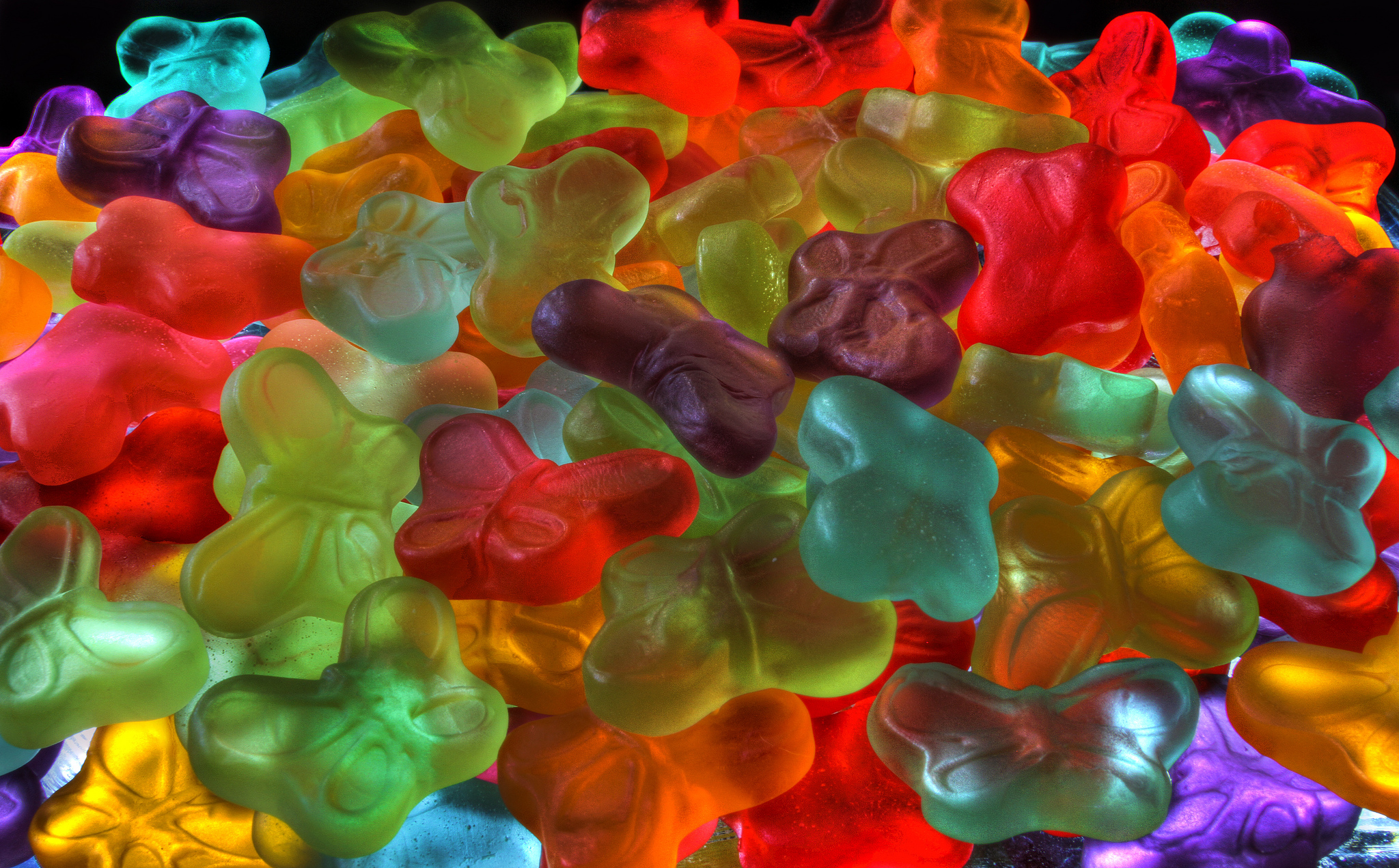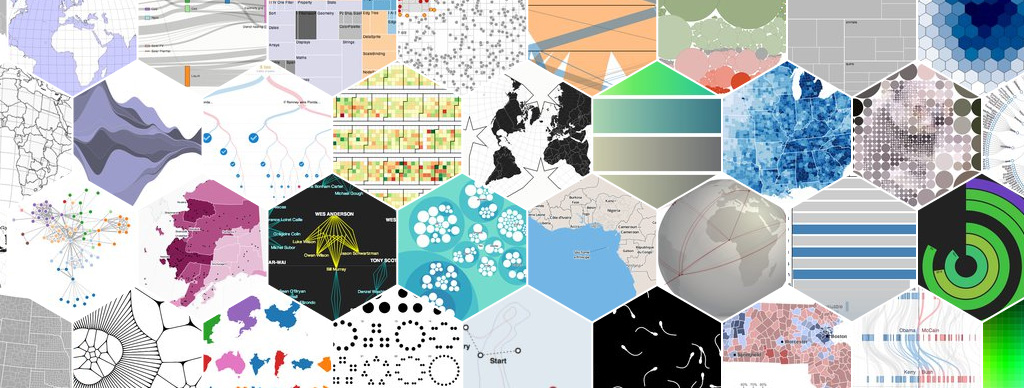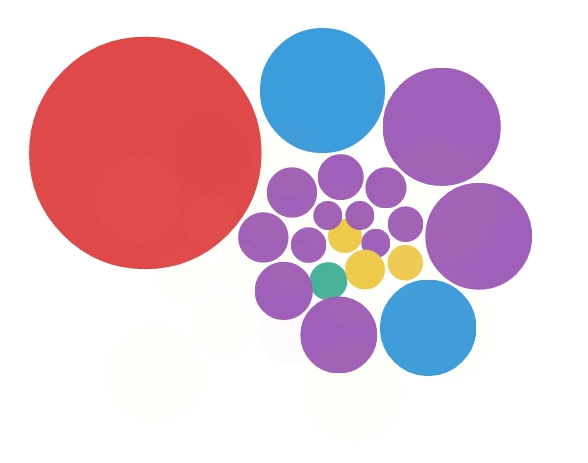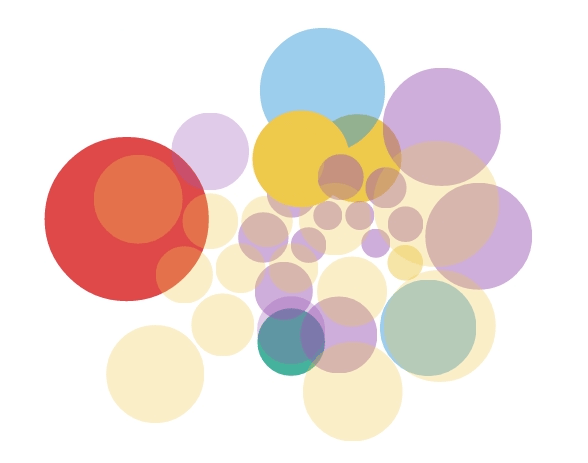Data Visualization Eye Candy with Streaming JSON
Tomomi Imura




Create a pack layout with d3.layout.pack() object
var svg = d3.select('#chart').append('svg')
.attr('width', 600).attr('height', 600);
var bubble = d3.layout.pack()
.size([diameter, diameter])
// new data will be loaded to bubble layout
.value(function(d) {return d.size;})
var data = {"countries_msg_vol": {
"CA": 170,
"US": 393,
"CU": 9,
"BR": 89,
"MX": 192,
...,
"Other": 254
}};
{children: [an array of objects]}function processData(data) {
var obj = data.countries_msg_vol;
var newDataSet = [];
for(var prop in obj) {
newDataSet.push({name: prop,
className: prop.toLowerCase(), size: obj[prop]});
}
return {children: newDataSet};
}
.ca, .us {
fill: #DF4949;
}
.uc, .br, .mx {
fill: #E27A3F;
}
.other {
fill: #45B29D;
}
...
Load the tailored data into the layout object's nodes() function
var nodes = bubble.nodes(processData(data))
// filter out the outer bubble
.filter(function(d) { return !d.children; });
Use the generated layout calculations to display in SVG
var g = svg.append('g');
var vis = svg.selectAll('circle')
.data(nodes, function(d) { return d.name; });
vis.enter().append('circle')
.attr('transform', function(d) { return 'translate('
+ d.x + ',' + d.y + ')'; })
.attr('r', function(d) { return d.r; })
.attr('class', function(d) { return d.className; });
<script src="//cdn.pubnub.com/pubnub.min.js"></script>var channel = 'my-data-channel'; var pubnub = PUBNUB.init({ subscribe_key: my_subscription_key_here });
To retrieve your data stream, use subscribe() API
pubnub.subscribe({
channel: channel,
callback: drawBubbles(message) {
// place the code from Step 1.3
}
});
New set of data comes in, new bubbles are displayed on top

To make the node updateable, you need to assign a name to each node.
D3 takes a key function as a 2nd argument to the data():
var vis = svg.selectAll('circle')
.data(nodes, function(d) { return d.name; });
To enter new data to the existing nodes, we are going to update them. This way, each assigned bubble circle updates its size and position correctly, instead of creating a new one with new data.



Create the transition on the updating elements before the entering elements
because enter().append() merges entering elements into the update selection
// update - This only applies to updating nodes
vis.transition()
.duration(duration)
.delay(function(d, i) {delay = i * 7; return delay;})
.attr('transform', function(d) {
return 'translate(' + d.x + ',' + d.y + ')'; })
.attr('r', function(d) { return d.r; })
// enter
vis.enter().append('circle')
.attr('transform', function(d) {
return 'translate(' + d.x + ',' + d.y + ')'; })
.attr('r', function(d) { return d.r; })
.attr('class', function(d) { return d.className; })
.style('opacity', 0)
.transition()
.duration(duration * 1.2)
// exit
vis.exit()
.transition()
.duration(duration + delay)
.style('opacity', 0)
.remove();